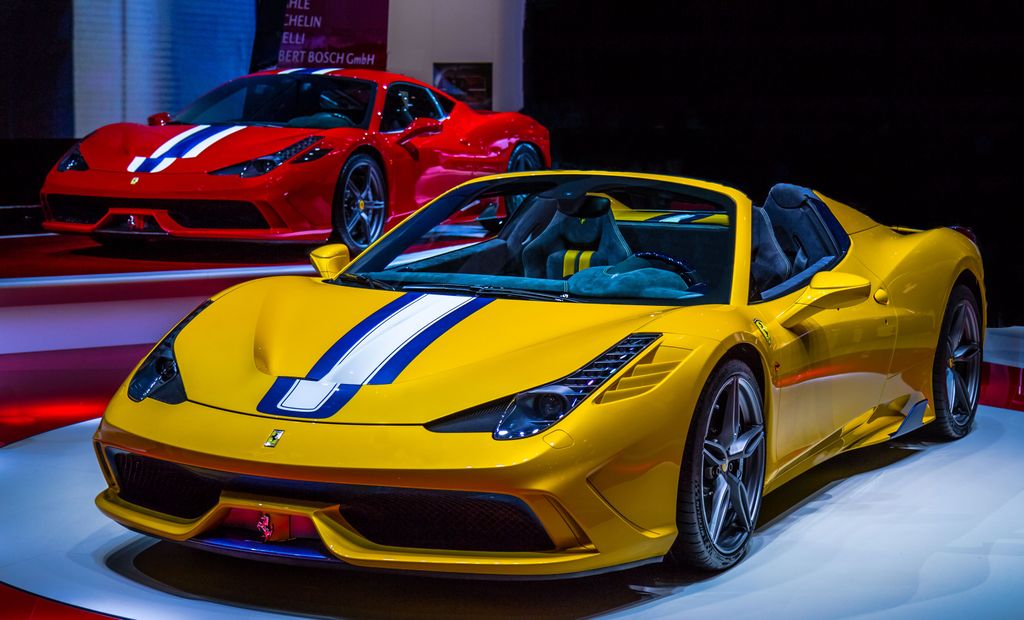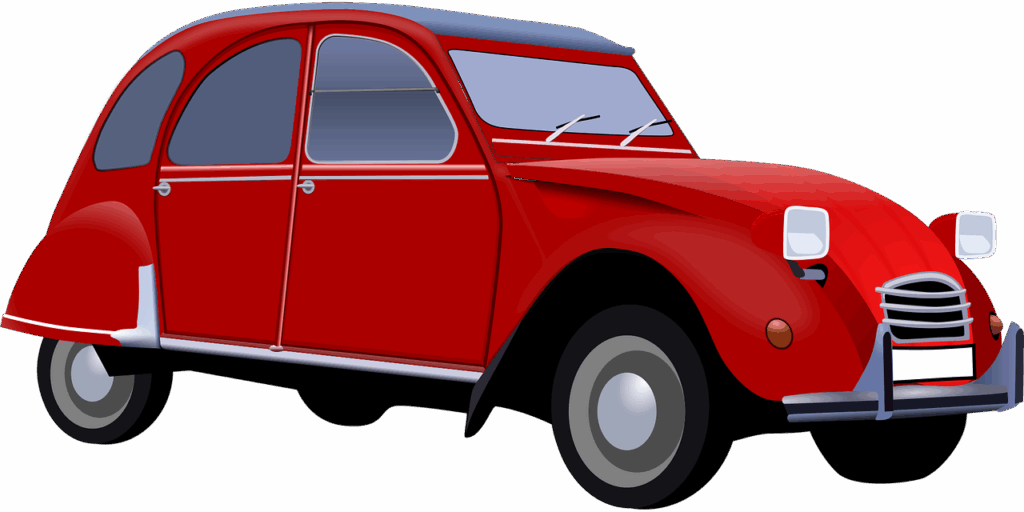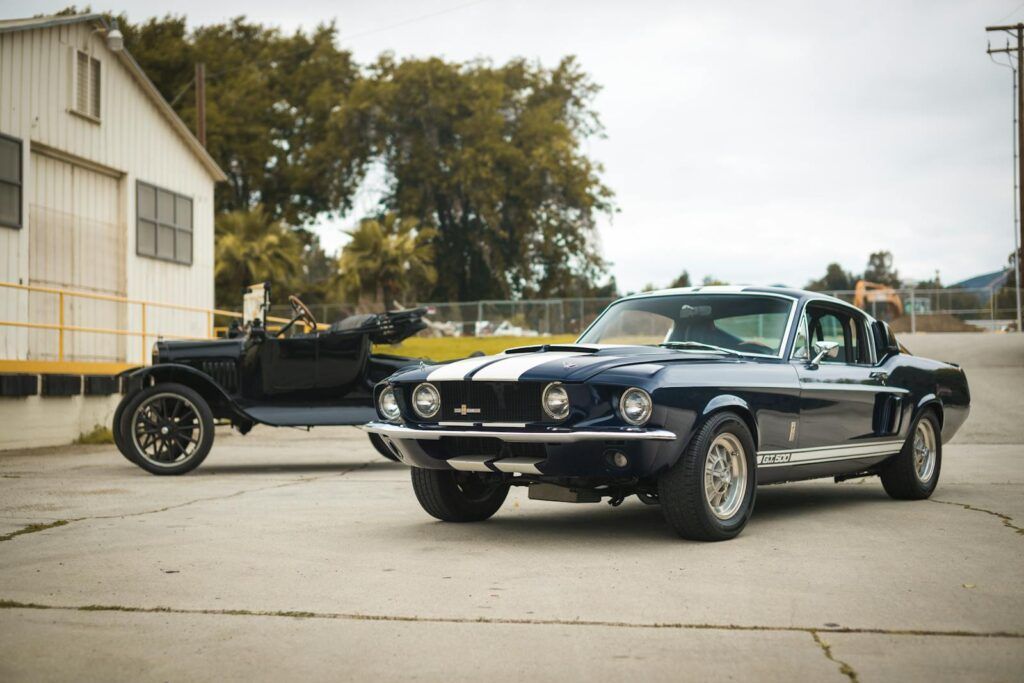
In the vibrant pantheon of American automotive history, certain names instantly conjure images of raw power, unmistakable style, and legendary performance. Icons like the Ford Mustang, Chevrolet Camaro, and Dodge Challenger have rightly earned their place at the forefront of the muscle car narrative, celebrated by enthusiasts and collectors alike. Their thunderous V8s, aggressive stances, and quarter-mile prowess define an era of unbridled automotive passion, etching themselves into the cultural fabric.
However, for every celebrated legend, there exists a cohort of equally formidable machines that, for various reasons, never quite stepped into the mainstream spotlight. These are the unsung heroes, the powerful contenders either overshadowed by more famous siblings, produced by smaller companies, or simply ahead of their time. They possess a unique blend of performance, distinctive design, and undeniable charm that often gets overlooked in the clamor for the well-known, presenting an intriguing alternative for the discerning enthusiast.
As leading authorities in automotive journalism, we believe it’s time to shine a well-deserved light on these formidable yet underappreciated vehicles. This in-depth exploration will delve into the technical specifications, design insights, and compelling historical context of some of the finest muscle cars that deserve far more recognition than they currently receive. Prepare to discover the hidden powerhouses that offer incredible driving experiences and, in many cases, a more accessible entry point into the thrilling world of classic muscle. We’re stretching the definition of “muscle car” here, but that means pretty much everyone will find at least one alternative muscle car that fits their budget and driving style.
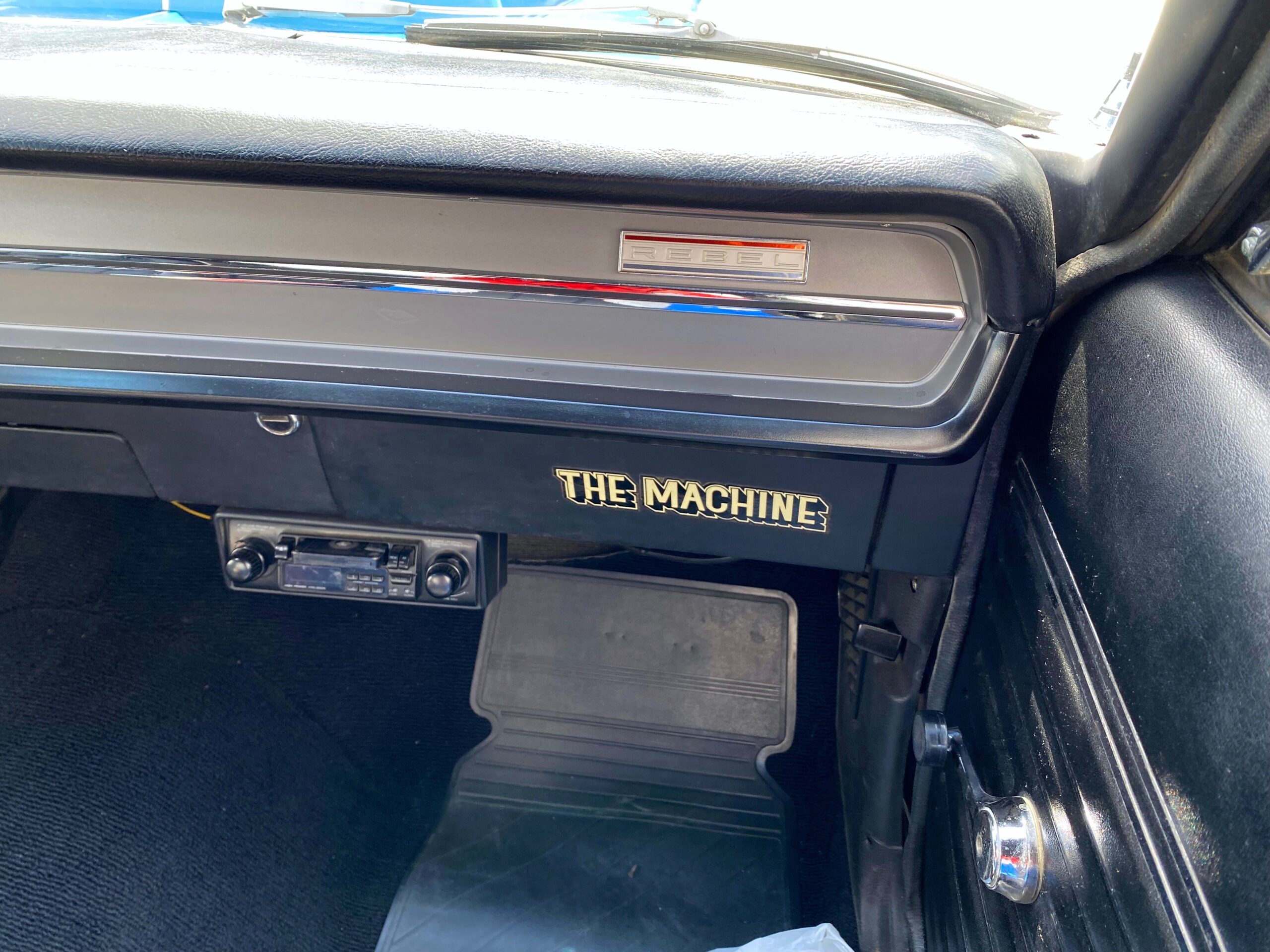
1. **1970 AMC Rebel Machine**American Motors Corporation (AMC) might not boast the same legendary status as the “Big Three,” but the 1970 AMC Rebel Machine stands as a powerful testament to their brief yet impactful foray into the muscle car segment. This formidable two-door was produced by the lesser-known company, yet it absolutely refused to be a slouch in the power department. It represented AMC’s concerted effort to blend their best components into a cohesive, high-performance package designed to cash in on the muscle car craze.
Underneath its attractive, squared-off exterior lay a robust 340-horsepower 390-cubic inch V8 engine, propelling the Rebel Machine with a ferocity that could rival many of its more famous contemporaries. This engine made it AMC’s most powerful vehicle of the era, truly living up to its aggressive trim name. Performance figures were impressive for its time, with the Rebel Machine capable of running mid-14s in the quarter mile, a feat that demanded respect on any drag strip.
Beyond its mechanical prowess, the Rebel Machine captured attention with its striking and instantly recognizable aesthetics. It came standard with a distinctive red, white, and blue paint scheme, a bold declaration of its American roots and a symbol of its no-nonsense, patriotic muscle. This patriotic livery, coupled with its aggressive stance, made it visually stand out from the crowd.
Despite its considerable performance credentials and its undeniable visual flair, the 1970 AMC Rebel Machine often finds itself overshadowed by the more famous models from Chevrolet, Ford, and Dodge. With only about 2,500 units ever built, it is a rare sight today. This rarity, combined with its historical oversight, makes it a surprisingly overlooked gem that, for the connoisseur, offers a unique blend of power, style, and exclusivity, making ownership a smart investment as it could grow to be considerably more appreciated.
Car Model Information: 2025 Alfa Romeo Stelvio Sprint
Caption: 1968 AMC Rebel 770 station wagon
Name: AMC Rebel
Aka: Australia,Mexico,Europe
Manufacturer: American Motors Corporation
Production: 1967–1970 (US market)
ModelYears: 1967–1970 (US market)
Assembly: Australia
Class: Mid-size car
BodyStyle: sedan (car),convertible,hardtop,4-door sedan,station wagon
Engine: 232 CID
Abbr: on approx.
Transmission: Manual transmission,Overdrive (mechanics),4-speed manual floor or console,Automatic transmission,3-speed “Shift-Command” on console
Layout: Front-engine, rear-wheel drive layout
Wheelbase: 114 in
Length: {{convert,197,in,mm,0,abbr=on
Width: 77.29 in
Height: 53.5 in
Weight: 3500 lb
Platform: AMC’s “senior cars”
Predecessor: Rambler Classic
Successor: AMC Matador
Related: AMC Ambassador
Categories: 1970s cars, AMC vehicles, All articles with dead external links, Articles with dead external links from July 2023, Articles with permanently dead external links
Summary: The AMC Rebel (known as the Rambler Rebel in 1967) is a midsized car produced by American Motors Corporation (AMC) from the 1967 until the 1970 model year. It replaced the Rambler Classic. A similar AMC Matador line replaced the Rebel models, starting with the 1971 model year.
The Rebel was positioned as the high-volume seller in the independent automaker’s line of models. The Rebel was also available in several specialty models, including station wagons featuring themed trim and luxury equipment offered only in selected geographical regions. A high-performance, low-priced muscle car version was produced in 1970, the Machine, which is most recognized in its flamboyant white, red, and blue trim.
The Rebel is the shorter-wheelbase, intermediate-sized version of the longer-wheelbase, full-sized Ambassador line.
The Rebel was built at AMC’s West Assembly Line (along with the Ambassador) in Kenosha, Wisconsin, and in Brampton, Ontario, Canada (Bramalea – Brampton Assembly Plant).
The Rebel was also assembled from Complete Knock-down (CKD) kits under license in Europe (by Renault in 1967), in Mexico (by Vehiculos Automotores Mexicanos), in Costa Rica by Purdy Motor; and from Semi Knockdown kits (SKD) in Australia (by Australian Motor Industries), and in New Zealand (by Campbell Motor Industries). Although the Rambler name was discontinued on the Rebel in the U.S. and Canadian markets after the 1967 model year, the cars continued to be sold in international markets under the historic “Rambler” brand.
Get more information about: AMC Rebel
Buying a high-performing used car >>>
Brand: AMC Model: Rebel Machine
Price: $54,000 Mileage: 889 mi.
Read more about: Unearthing the Untamed: 2025’s Premier Factory Off-Road Vehicles Engineered for American Terrain
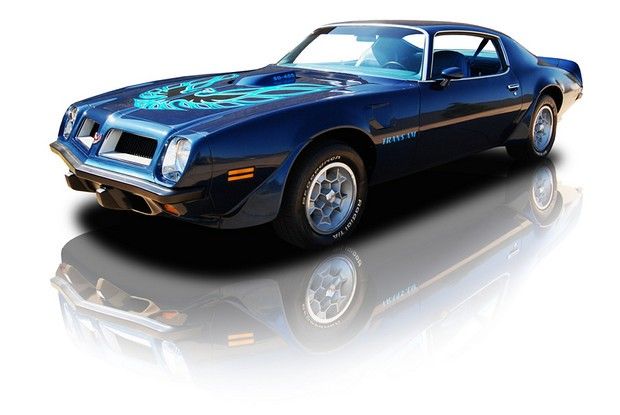
2. **1974 Pontiac Firebird Super Duty**The early 1970s marked a challenging period for muscle cars, as the global oil crisis and stricter emissions regulations began to cast a long shadow over high-performance vehicles. Yet, defying the prevailing trends, Pontiac steadfastly continued its commitment to performance, culminating in the remarkable 1974 Firebird Super Duty. This model stands as a defiant roar in an era of diminishing automotive thunder, showcasing Pontiac’s dedication to its performance heritage.
At the heart of the Super Duty was a potent 455-cubic inch V8 engine, an engineering marvel for its time that managed to produce a respectable 290 horsepower. These numbers were particularly impressive given the era’s constraints, illustrating Pontiac’s ability to extract significant power while navigating the increasing regulatory hurdles. Its robust output ensured that the Super Duty remained a formidable contender on the streets, even as many competitors scaled back.
The Super Duty’s relative obscurity can largely be attributed to the overwhelming focus on fuel economy that gripped the automotive industry during its production year. In an environment where efficiency was paramount, a high-performance, large-displacement V8 was often seen as an anachronism. This market shift prevented it from gaining the widespread recognition it so richly deserved, relegating it to a niche status among dedicated enthusiasts.
Despite its less celebrated status, the 1974 Pontiac Firebird Super Duty represents a pivotal moment in muscle car history—a powerful, high-performance vehicle born at a time when its kind was supposed to be in decline. It offers a unique blend of late-era muscle car power with the distinctive Firebird styling. This makes it an incredibly appealing option for collectors seeking a truly capable and historically significant machine that dares to defy the narrative of its time.
Car Model Information: 2025 Alfa Romeo Stelvio Sprint
Name: Pontiac Firebird
Caption: The second, third, and fourth generations of,the Pontiac Firebird Trans Am
Manufacturer: Pontiac (automobile)
Production: February 23, 1967 – August 30, 2002
ModelYears: 1967 – 2002
Class: Pony car,Muscle car
Platform: GM F platform
Related: Chevrolet Camaro
Layout: Front engine, rear-wheel-drive layout
Categories: 1970s cars, 1980s cars, 1990s cars, 2000s cars, All articles with dead external links
Summary: The Pontiac Firebird is an American automobile built and produced by Pontiac from the 1967 to 2002 model years. Designed as a pony car to compete with the Ford Mustang, it was introduced on February 23, 1967, five months after GM’s Chevrolet division’s platform-sharing Camaro. This also coincided with the release of the 1967 Mercury Cougar, Ford’s upscale, platform-sharing version of the Mustang.
The name “Firebird” was also previously used by GM for the General Motors Firebird series of concept cars in the 1950s.
Get more information about: Pontiac Firebird
Buying a high-performing used car >>>
Brand: Pontiac Model: Firebird Super Duty
Price: $54,000 Mileage: 889 mi.
Read more about: The Roaring Return: 12 Iconic Pontiac Legends We’d Love to See Back on the Road
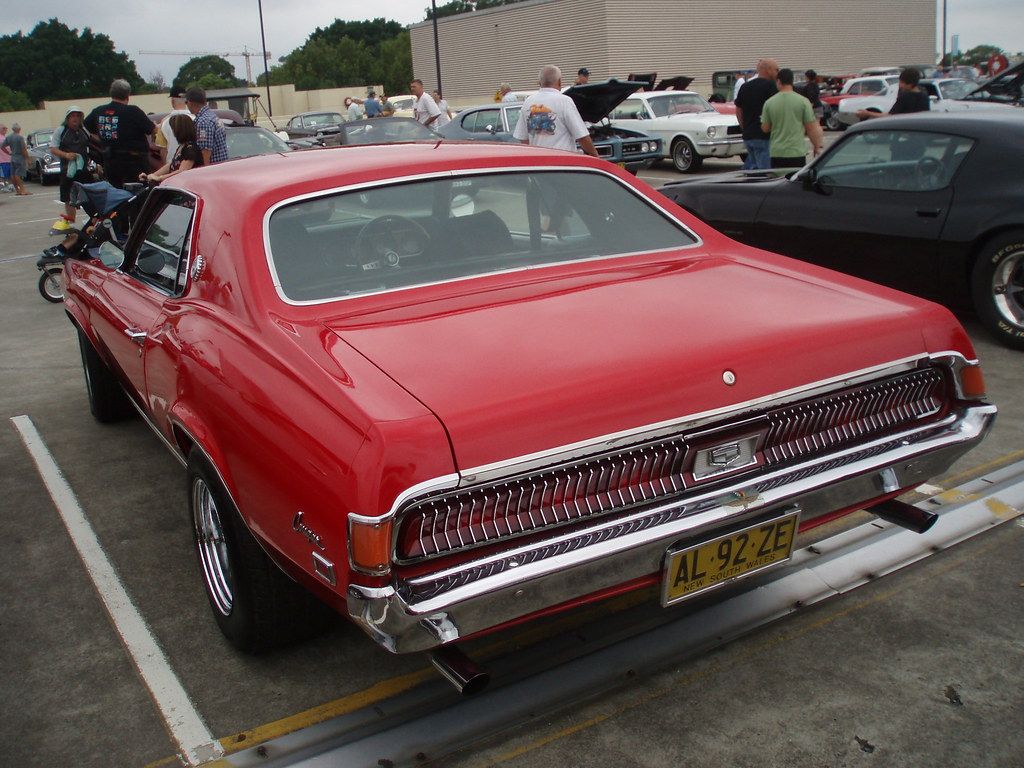
3. **1969 Mercury Cougar Eliminator**While the Ford Mustang often grabs the lion’s share of attention in the Ford family’s muscle car narrative, Mercury’s offerings from the same era were by no means to be underestimated. The 1969 Mercury Cougar Eliminator emerges as a prime example of this, representing Mercury’s distinctive take on muscle—a blend of raw power with a touch more refinement and unique styling that differentiated it from its more famous Ford cousin. It was designed to pack a serious punch.
The Eliminator was no mere styling exercise; it offered a formidable range of engine options that put it squarely in contention with the era’s best. Buyers could choose from potent powerplants including the Boss 302, 351W, or the legendary 428 Cobra Jet engine. These serious V8s ensured that the Eliminator could more than “hang with the best of them” on both the street and the strip, delivering exhilarating performance for its discerning owners.
Beyond its impressive powertrain, the Cougar Eliminator distinguished itself with a host of performance-oriented and aesthetic upgrades. It came equipped with functional spoilers that hinted at its aerodynamic capabilities, along with a competition suspension system designed for sharper handling. Unique exterior touches further set it apart from the standard Cougar, giving it a more aggressive and focused appearance that resonated with performance enthusiasts looking for something distinct.
Inside, the Eliminator aimed for a more sophisticated yet still performance-focused ambiance, feeling closer to a Mustang GT than a bare-bones muscle coupe. This combination of robust power, unique aggressive styling, and a slightly more refined interior made it a compelling package. Yet, it largely flew under the radar back then—and, even today, it continues to be less recognized than its blue-oval stablemates, making it an overlooked classic ripe for rediscovery.
Car Model Information: 2025 Alfa Romeo Stelvio Sprint
Name: Mercury Cougar
Caption: 1969 Mercury Cougar (first generation)
Manufacturer: Mercury (automobile)
Layout: Front-engine, rear-wheel-drive layout
ModelYears: 1967–1997,1999–2002
Class: Pony car,Personal luxury car,Mid-size car,Sport compact
Categories: 1960s cars, 1970s cars, 1980s cars, 1990s cars, 2000s cars
Summary: The Mercury Cougar is a series of automobiles that was sold by Mercury from 1967 to 2002. The model line is a diverse series of vehicles; though the Cougar nameplate is most commonly associated with two-door coupes, at various stages in its production, the model also was offered as a convertible and a hatchback. During its production as the mid-size Mercury line, the Cougar was also offered as a four-door sedan and five-door station wagon.
In production for 34 years across eight generations (skipping the 1998 model year), the Cougar is second only to the Grand Marquis (36 years) in the Mercury line for production longevity. 2,972,784 examples were produced, making it the highest-selling Mercury vehicle. During the 1970s and 1980s, the marketing of the Mercury division was closely associated with the Cougar, with promotional materials advertising Mercury dealers as “The Sign of the Cat” with big cats atop Lincoln-Mercury dealer signs. Cat-related nameplates were adopted by other Mercury lines, including the Bobcat and Lynx.
During its production, the Cougar was assembled at the Dearborn Assembly Plant (part of the Ford River Rouge Complex) in Dearborn, Michigan from 1967 until 1973, San Jose Assembly (Milpitas, California) from 1968 into early 1969, Lorain Assembly (Lorain, Ohio) from 1974 until 1997, and at Flat Rock Assembly (Flat Rock, Michigan) from 1999 through 2002.
Get more information about: Mercury Cougar
Buying a high-performing used car >>>
Brand: Mercury Model: Cougar Eliminator
Price: $54,000 Mileage: 889 mi.
Read more about: From Garage Gems to Gold Mines: 8 Muscle Cars Poised to Skyrocket in Value
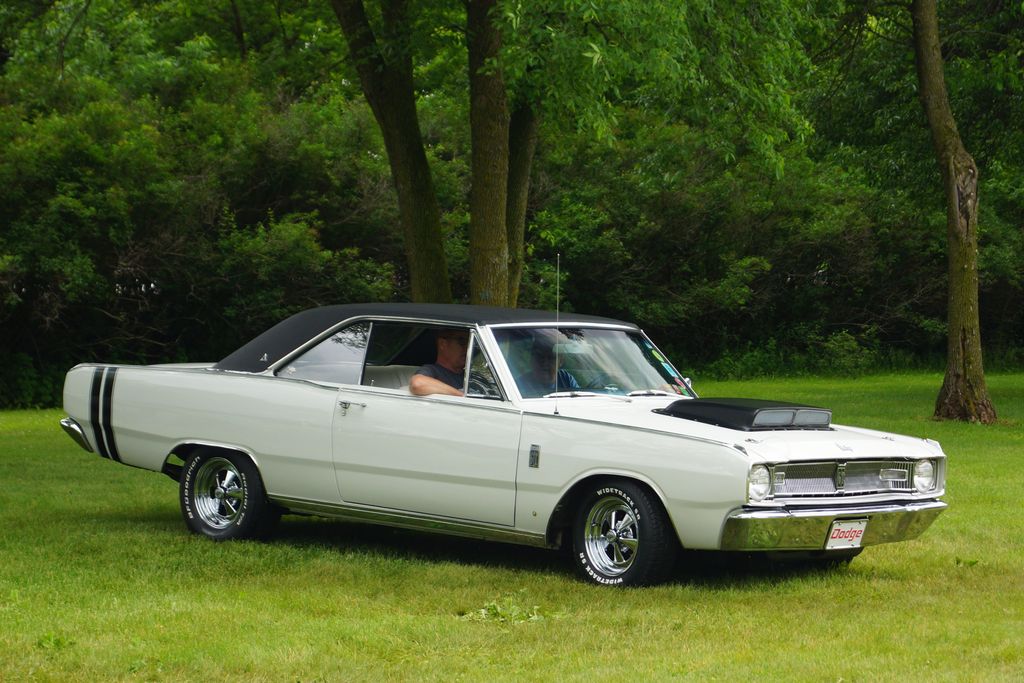
4. **1968 Dodge Dart GTS**In the realm of classic muscle cars, size often dictates perception, with larger, more imposing vehicles typically garnering the most attention. However, the 1968 Dodge Dart GTS shrewdly defied this convention, proving that significant power could indeed come in a deceptively compact package. This model was a quintessential “wolf in sheep’s clothing,” combining an unassuming exterior with truly ferocious performance capabilities that often caught unsuspecting rivals off guard.
Despite its smaller dimensions compared to traditional muscle car behemoths, the Dart GTS was engineered to perform with the best of them. Owners had the thrilling option of specifying either a big-block 383 or an even more potent 440 V8 engine. When equipped with the 440, this compact Mopar powerhouse could unleash an astounding 375 horsepower, a figure that cemented its status as a serious contender despite its more diminutive stature.
The genius of the Dart GTS lay in its understated aggression. While it wasn’t as overtly flamboyant as some of its Charger or Challenger siblings, its raw power-to-weight ratio made it an absolute terror on the streets. Its ability to deliver such staggering performance from a relatively lightweight chassis contributed to its reputation as a sleeper. This unassuming nature is precisely why it often flew under the radar of mainstream appreciation.
It remains surprising that a model with such formidable horsepower and an undeniable capability to outperform many larger cars of its era doesn’t receive more widespread attention today. The 1968 Dodge Dart GTS offers a compelling argument for those who appreciate understated power and a fantastic driving experience without the inflated price tag often associated with more famous muscle car names. It’s a genuine classic that rewards those who look beyond the obvious.
Car Model Information: 2024 Ford Mustang EcoBoost Premium
Name: Dodge Dart
Caption: 1966 Dodge Dart GT 2-door hardtop
Manufacturer: Dodge
Production: 1959–1976 (US market)
ModelYears: 1960–1976 (US market)
Class: Full-size
Layout: FR layout
Predecessor: Dodge Coronet#Fourth generation (1957–1959)
Related: Plymouth Valiant,Chrysler Valiant,Dodge Phoenix
Successor: Dodge Aspen,Dodge Diplomat,Talbot Tagora
Categories: 1970s cars, All articles with unsourced statements, Articles with short description, Articles with unsourced statements from December 2023, Articles with unsourced statements from May 2025
Summary: The Dodge Dart is a line of passenger cars produced by Dodge from the 1959 to 1976 model years in North America, with production extended to later years in various other markets.
The production Dodge Dart was introduced as a lower-priced full-size model in 1960 and 1961, but became a mid-size car for one model year for 1962, and was then reduced to a compact for two generations, from 1963 to 1976.
Chrysler had first used ‘Dart’ name plates on two Italian styled show cars, in 1956 and 1957, before it became a Dodge model name. The Dart nameplate was resurrected for a Fiat-derived compact car that was introduced in 2012.
Get more information about: Dodge Dart
Buying a high-performing used car >>>
Brand: Dodge Model: Dart GTS
Price: $31,463 Mileage: 33,139 mi.
Read more about: The Untamed 15: Legendary Muscle Cars That Dominated the Drag Strip and Refused to Lose
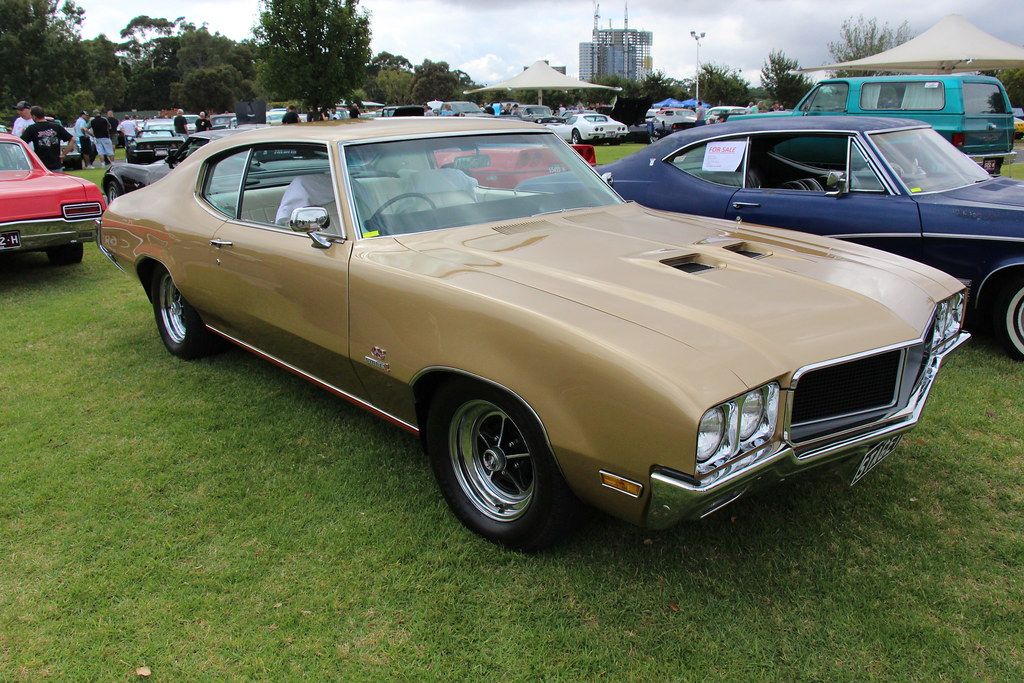
5. **1970 Buick GS 455 Stage 1**The 1970 Buick GS 455 Stage 1 stands as a magnificent embodiment of the era when luxury and brute force harmoniously converged. Buick, renowned for its upscale offerings, successfully injected an unprecedented level of performance into its Gran Sport line, creating a vehicle that was not just powerful, but also refined. This model, often cited alongside its GSX trim, set a benchmark for torque output that was unrivaled by any other production muscle car of its time.
At the heart of this formidable machine was the colossal 455-cubic inch V8 engine. This powerplant was an absolute marvel, producing an astounding 510 lb-ft of torque. While factory rated at 360 horsepower (some sources suggest up to 370 hp), the sheer torque figure alone made it one of the fastest muscle cars of its time, easily outperforming many lighter competitors in real-world acceleration and quarter-mile sprints. Enthusiasts often forget how truly quick the GS 455 Stage 1 really was.
Despite its impressive size, the GS 455 Stage 1 demonstrated remarkable agility and speed, capable of running the quarter-mile in the low 13s with a skilled launch. This performance was achieved while maintaining the sophisticated interior Buick owners expected, featuring upscale wood trim and plush seating. It was a vehicle that could confidently handle both a luxurious cruise and a serious thrash down the drag strip, embodying a dual personality that few muscle cars could match.
Even with its extraordinary prowess—boasting more torque than a legendary 426 Hemi and often being around 150 pounds lighter than some contemporaries—the 1970 Buick GS 455 Stage 1 continues to reside in the shadow of more iconic muscle cars. While most enthusiasts can appreciate this “big bad Buick,” when stacked against fellow A-body names like GTO, Chevelle, and 442, the GS tends to fall to the bottom in terms of recognition. This makes it a “quietly fast” and genuinely underappreciated masterpiece for those in the know.
Car Model Information: 2024 Ford Mustang EcoBoost Premium
Name: Gran Sport
Logo: Buick gs emblem.png
Producttype: Performance car
Currentowner: General Motors
Producedby: General Motors
Introduced: [object Object]
Related: T-Type
Markets: U.S.
Categories: All Wikipedia articles in need of updating, All articles with unsourced statements, Articles with short description, Articles with unsourced statements from September 2020, Articles with unsourced statements from September 2025
Summary: The Gran Sport name has been used on several high-performance cars built by General Motors for its Buick brand since 1965. In the GM brands hierarchy, Buick was surpassed in luxury and comfort appointments only by Cadillac, which did not produce performance models. As a result, the Buick GS series were the most opulently equipped GM sport models of their era.
The Gran Sport performance enhancements on all Buick products during this era sought to affirm Buick’s tradition of producing powerful and comfortable products going back to the 1930s when all Buicks of the time were upgraded to the Buick Fireball Straight Eight, then installed the 278 cu in (4.6 L) Roadmaster engine in the shortest model Special and introduced the Century, known as “the banker’s hot rod” with a three speed synchromesh manual transmission. The Gran Sport sought to identify cars that were fun to drive with a luxury approach.
Get more information about: Buick Gran Sport
Buying a high-performing used car >>>
Brand: Buick Model: GS 455
Price: $31,463 Mileage: 33,139 mi.
Read more about: Unleash Your Inner Gearhead: 14 Classic Car Restoration Projects Under $10K That Promise High Returns
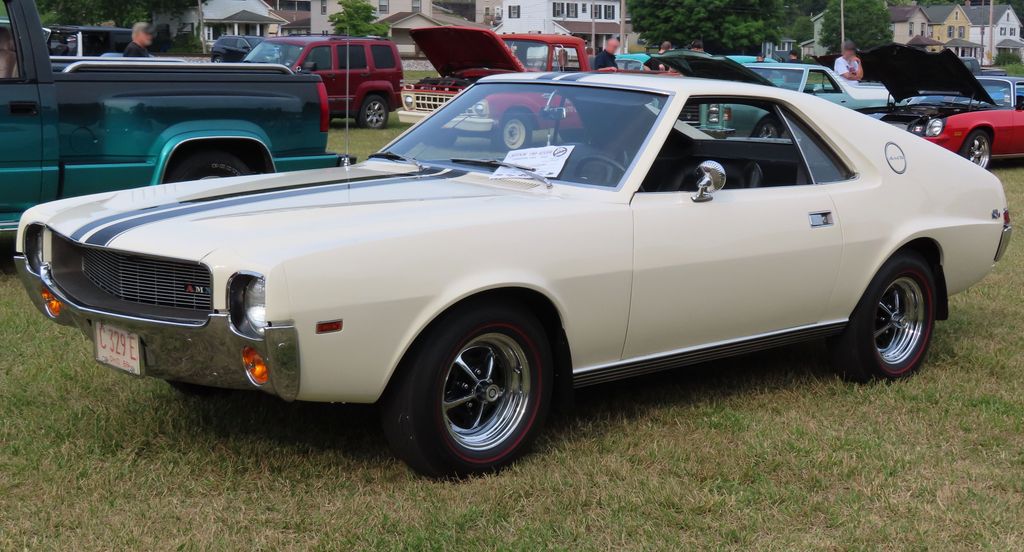
6. **1968 AMC AMX**In an era dominated by four-seater coupes and sedans, American Motors Corporation (AMC) dared to challenge convention with the introduction of the 1968 AMC AMX. This car was a bold statement, specifically designed as a two-seater muscle car—a rarity in the segment that immediately set it apart from its competitors. AMC’s aim was to deliver a pure, unadulterated performance experience, stripped down to its essentials for maximum thrill.
The AMX was more than just its unique configuration; it was built for serious speed. Powering this distinctive machine was a range of V8 options, culminating in a potent 390-cubic-inch V8. This engine provided an exceptional power-to-weight ratio, which is a critical factor in performance. With less mass to propel, the AMX could accelerate with an urgency that belied its smaller footprint, delivering exhilarating drives that captivated anyone behind the wheel.
However, the very feature that made the AMX so unique—its two-seat configuration—also proved to be a limiting factor in its broader market appeal. While it catered to a specific segment of performance enthusiasts who prioritized driving dynamics over practicality, its lack of rear seating made it less versatile for families or those needing more passenger capacity. This niche appeal ultimately contributed to its status as an overlooked classic.
Despite its limited mainstream success, the 1968 AMC AMX remains a fascinating and highly desirable piece of muscle car history. It was a true driver’s car, offering a direct and engaging experience that few others could match. For collectors and enthusiasts seeking a distinctive, high-performance machine that stands apart from the typical muscle car crowd, the AMX represents an opportunity to own a rare and genuinely undervalued piece of American automotive innovation.
Read more about: From Garage Gems to Gold Mines: 8 Muscle Cars Poised to Skyrocket in Value
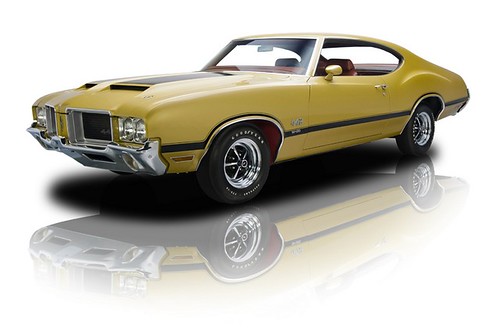
7. **1971 Oldsmobile 442**The Oldsmobile 442, while certainly a recognized nameplate within muscle car circles, often finds itself struggling for the same mainstream fame enjoyed by its contemporaries from Chevrolet and Pontiac. The 1971 Oldsmobile 442 is a prime example of this paradox: a vehicle that delivered robust performance and sophisticated styling but somehow missed the broader public acclaim it unequivocally deserved. It was a serious contender, built to impress both on the road and at the strip.
Under the hood, the 1971 Oldsmobile 442 packed a formidable punch with its 455-cubic inch V8 engine. This powerplant was capable of producing up to 370 horsepower and an impressive 500 lb-ft of torque. These figures are nothing short of spectacular, ensuring that the 442 possessed ample grunt for rapid acceleration and effortless cruising. Its strong, linear power delivery made it a joy to drive, showcasing Oldsmobile’s commitment to high-performance engineering.
The “442” designation, which historically referred to a four-barrel carburetor, four-speed manual transmission, and dual exhausts (though by this era it had evolved), signified a performance package designed for enthusiasts. The 1971 model maintained this legacy of potent performance, blending it with Oldsmobile’s characteristic touch of refinement and comfort. It wasn’t just a brute; it was a well-appointed machine that offered a more mature muscle car experience.
While the 442 was highly regarded within the informed confines of muscle car aficionados, it struggled to break through into wider public consciousness in the same way some other models did. This oversight means that the 1971 Oldsmobile 442, with its powerful 455 V8 and impressive torque, represents an excellent opportunity for enthusiasts looking for a capable and stylish muscle car that offers significant performance without the inflated price tags of its more famous, but not necessarily better-performing, rivals. It’s a testament to Oldsmobile’s engineering prowess.
Continuing our journey through the forgotten titans, we now bring into focus seven more distinctive muscle cars that delivered incredible performance and style but never truly received the widespread recognition they deserved. These vehicles represent a fascinating cross-section of automotive engineering, challenging the perception that only the most famous names hold the keys to muscle car heritage. Their unique attributes and historical context paint a rich picture of an era defined by raw power and evolving design.
Car Model Information: 1969 Oldsmobile 442
Name: Oldsmobile 442
Manufacturer: Oldsmobile
ModelYears: 1964–1980,1985–1987,1990–1991
Class: Muscle car
Layout: FR layout
Caption: 1971 Oldsmobile 442
Categories: 1960s cars, 1970s cars, 1980s cars, All articles with unsourced statements, Articles with short description
Summary: The Oldsmobile 4-4-2 is a muscle car produced by Oldsmobile between the 1964 and 1987 model years. Introduced as an option package for US-sold F-85 and Cutlass models, it became a model in its own right from 1968 to 1971, spawned the Hurst/Olds in 1968, then reverted to an option through the mid-1970s. The name was revived in the 1980s on the rear-wheel drive Cutlass Supreme and early 1990s as an option package for the new front-wheel drive Cutlass Calais.
The “4-4-2” name (pronounced “Four-four-two”) derives from the original car’s four-barrel carburetor, four-speed manual transmission, and dual exhausts. It was originally written “4-4-2” (with badging showing hyphens between the numerals), and remained hyphenated throughout Oldsmobile’s use of the designation. Beginning in 1965, the 4-4-2s standard transmission was a three-speed manual along with an optional two-speed automatic and four-speed manual, but were still badged as “4-4-2″s.
Because of this change, from 1965 on, according to Oldsmobile brochures and advertisements, the 4-4-2 designation referred to the 400 cubic inch engine, four-barrel carburetor, and dual exhausts. By 1968, badging was shortened to simply “442”, but Oldsmobile brochures and internal documents continued to use the “4-4-2” model designation.
Get more information about: Oldsmobile 442
Buying a high-performing used car >>>
Brand: Oldsmobile Model: 442
Price: $43,990 Mileage: 24,000 mi.
Read more about: 15 Undervalued 1970s Classic Cars That Are Smart Buys for Enthusiasts Today

8. **1963 Ford Galaxie 500XL**Before the Mustang redefined the landscape for Ford, the 1963 Ford Galaxie 500XL stood as a formidable, if sometimes overlooked, testament to early American high performance. This full-size coupe wasn’t just a comfortable cruiser; it was an authentic muscle car, setting an early precedent for the performance capabilities that would soon captivate a generation. Its substantial presence on the road belied a heart of pure power, often surprising those who underestimated its potential.
At the core of the Galaxie 500XL’s prowess was the legendary 427-cubic inch V8 engine. This powerhouse delivered astounding performance for its era, pushing the big Ford with a ferocity that few cars could match. Equipped with this potent engine, the Galaxie 500XL could hold its own against smaller, more agile competitors, proving that a larger platform could indeed be a serious contender on the street and at the drag strip.
Despite its impressive power and obvious performance attributes, the Galaxie 500XL often finds itself relegated to the background in discussions of Ford muscle cars. The overwhelming popularity and cultural impact of the Mustang, which arrived shortly after, effectively overshadowed its earlier, larger stablemate. This historical context meant the Galaxie, an early example of what a muscle car could be, never quite received its full measure of mainstream adoration, making it a true sleeper for collectors today.
Car Model Information: 2019 Volkswagen Tiguan 2.0T SE 4MOTION
Name: Ford Galaxie
Caption: 1963 Ford Galaxie 500 4-Door Sedan
Manufacturer: Ford Motor Company
Production: 1958–1974 (United States),1964–1968 (Australia),1967–1983 (Brazil)
ModelYears: 1959–1974
Assembly: Homebush West,Australia,São Paulo,Brazil
Class: Full-size
Layout: FR layout
Predecessor: Ford Fairlane (Americas)
Successor: Ford LTD (Americas)
Categories: 1960s cars, 1970s cars, All articles with unsourced statements, Articles with short description, Articles with unsourced statements from February 2010
Summary: The Ford Galaxie is a full-size automobile that was sold by the Ford Motor Company in North America from the 1959 to 1974 model years. Deriving its nameplate from a marketing tie-in with the excitement surrounding the Space Race, the Galaxie was offered as a sedan within the full-size Ford range throughout its production run. In the full-size segment, the model line competed against the Chevrolet Impala and Plymouth Fury.
The model line was assembled by Ford in multiple sites across the United States; four generations of the model line were produced. The Galaxie was also produced locally by Ford Australia and Ford Brasil, adopting commonality from the third-generation 1965 design.
Get more information about: Ford Galaxie
Buying a high-performing used car >>>
Brand: Ford Model: Galaxie 500XL
Price: $12,956 Mileage: 115,423 mi.
Read more about: The Rise and Fall: A Comprehensive Look at Why Ford Ended the Mercury Brand After 70+ Years
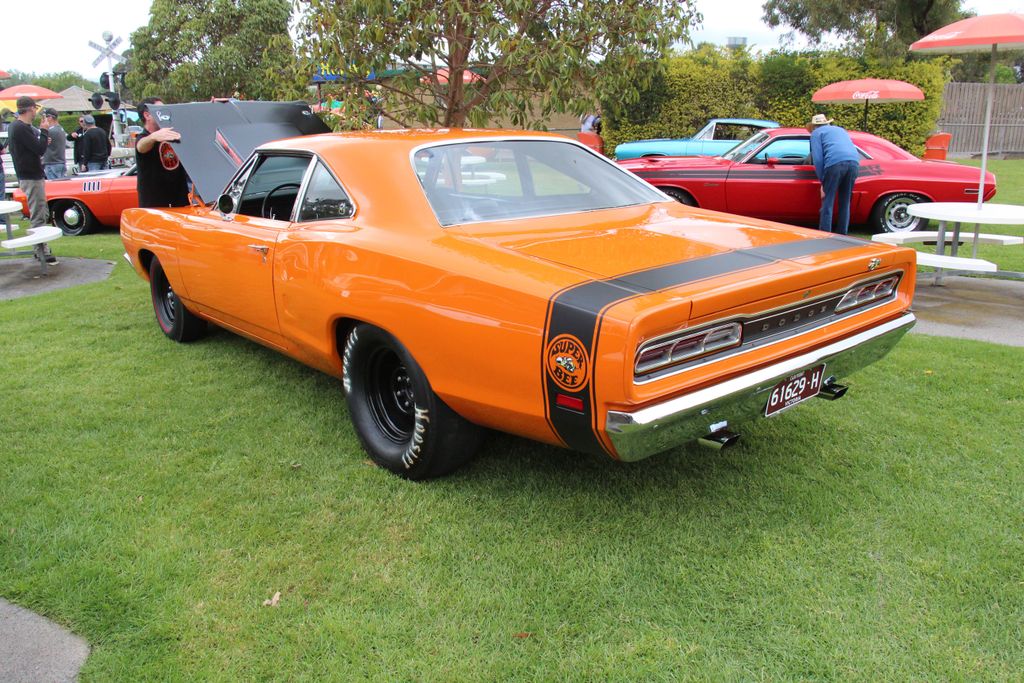
9. **1969 Dodge Coronet Super Bee**While its name might suggest a lighthearted approach, the 1969 Dodge Coronet Super Bee was unequivocally serious business where performance was concerned. Engineered for both speed and affordability, this Mopar entry was conceived to appeal to the younger, performance-hungry buyer looking for maximum bang for their buck. It delivered on that promise with aggressive styling and uncompromising power, embodying the true spirit of the muscle car era.
Under the hood, the Super Bee offered a thrilling selection of formidable engines, including the venerable 426 Hemi and the potent 440 Six Pack. These legendary powerplants ensured that the Super Bee was not only fast but capable of dominating many of its rivals on the strip. The option of a Hemi in an affordable package was a significant draw, offering elite-level performance to a broader audience.
However, in the competitive landscape of Dodge’s own lineup, the Coronet Super Bee often found itself contending with the overwhelming popularity of its more flamboyant siblings, the Charger and Challenger. While the Super Bee matched them in raw performance and offered a distinctive appearance, it struggled to carve out its own space in the public consciousness. This internal competition meant it became an overlooked gem, a potent machine that deserved far more fanfare.
Car Model Information: 2025 Hyundai PALISADE XRT
Name: Dodge Super Bee
Manufacturer: Chrysler Corporation
Production: 1968–1971 , 1970–1980 (Mexico only) , 2007–2009 , 2012–2013
Layout: FR layout
Class: Muscle car
Caption: 1969 Dodge Coronet Super Bee A12 “Six Pack”
Categories: 1960s cars, 1970s cars, All articles needing additional references, All articles with dead external links, All articles with unsourced statements
Summary: The Dodge Super Bee is a mid-sized muscle car marketed by Dodge, that was produced for the 1968 through 1971 model years.
In Mexico, the Super Bee was based on a compact-sized Chrysler platform and marketed from 1970 until 1980.
The Super Bee model name was resurrected for the 2007, 2008, 2009, 2012, and 2013 Dodge Charger Super Bee models.
Get more information about: Dodge Super Bee
Buying a high-performing used car >>>
Brand: Dodge Model: Coronet Super Bee
Price: $40,788 Mileage: 5,081 mi.
Read more about: Dax Shepard’s Legendary Garage: Unpacking 14 Automotive Jewels in His Coveted Collection
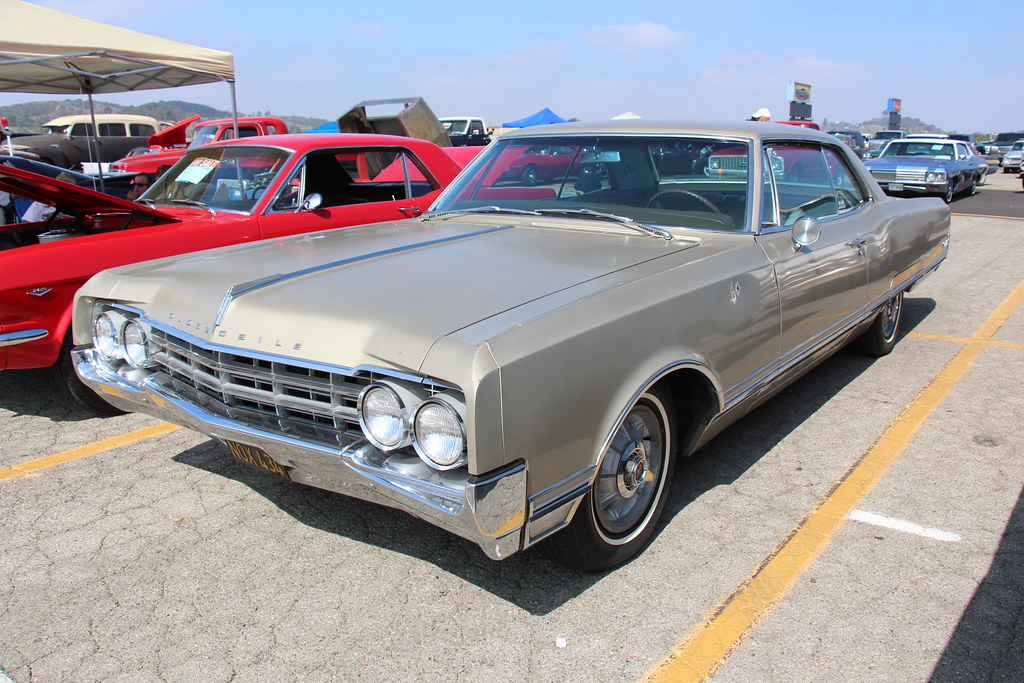
10. **1965 Oldsmobile 442**Before the Oldsmobile 442 cemented its place as a recognized nameplate with later, high-torque iterations, the 1965 model laid crucial groundwork as a sophisticated and capable early muscle car. This iteration captured the essence of blending performance with Oldsmobile’s characteristic refinement, presenting a package that was potent yet undeniably polished for its time. It showcased how Oldsmobile aimed to deliver a superior driving experience without sacrificing raw power.
At the heart of the 1965 442 was a robust 400-cubic-inch V8 engine, producing an impressive 345 horsepower. The iconic “442” designation, at this point, stood for a four-barrel carburetor, a four-speed manual transmission, and dual exhausts—a clear indicator of its performance-oriented setup. This configuration ensured brisk acceleration and a thrilling exhaust note, making every drive an event for the enthusiast.
Despite its advanced engineering and strong performance figures, the 1965 Oldsmobile 442 didn’t achieve the same level of mainstream fame as some of its more aggressively marketed contemporaries. Its slightly more sophisticated demeanor and higher price point meant it appealed to a discerning buyer rather than the broader, youth-oriented market that flocked to other brands. Consequently, this refined yet powerful muscle car remains a less celebrated but equally deserving classic, representing a pivotal moment in Oldsmobile’s performance history.
Car Model Information: 1969 Oldsmobile 442
Name: Oldsmobile 442
Manufacturer: Oldsmobile
ModelYears: 1964–1980,1985–1987,1990–1991
Class: Muscle car
Layout: FR layout
Caption: 1971 Oldsmobile 442
Categories: 1960s cars, 1970s cars, 1980s cars, All articles with unsourced statements, Articles with short description
Summary: The Oldsmobile 4-4-2 is a muscle car produced by Oldsmobile between the 1964 and 1987 model years. Introduced as an option package for US-sold F-85 and Cutlass models, it became a model in its own right from 1968 to 1971, spawned the Hurst/Olds in 1968, then reverted to an option through the mid-1970s. The name was revived in the 1980s on the rear-wheel drive Cutlass Supreme and early 1990s as an option package for the new front-wheel drive Cutlass Calais.
The “4-4-2” name (pronounced “Four-four-two”) derives from the original car’s four-barrel carburetor, four-speed manual transmission, and dual exhausts. It was originally written “4-4-2” (with badging showing hyphens between the numerals), and remained hyphenated throughout Oldsmobile’s use of the designation. Beginning in 1965, the 4-4-2s standard transmission was a three-speed manual along with an optional two-speed automatic and four-speed manual, but were still badged as “4-4-2″s.
Because of this change, from 1965 on, according to Oldsmobile brochures and advertisements, the 4-4-2 designation referred to the 400 cubic inch engine, four-barrel carburetor, and dual exhausts. By 1968, badging was shortened to simply “442”, but Oldsmobile brochures and internal documents continued to use the “4-4-2” model designation.
Get more information about: Oldsmobile 442
Buying a high-performing used car >>>
Brand: Oldsmobile Model: 442
Price: $43,990 Mileage: 24,000 mi.
Read more about: Unearthing a Giga-Hoard: 12 Incredible Barn Finds from the ‘Generous Collection’ That Are Stunning the Automotive World

11. **1971 Plymouth GTX**Positioned as Plymouth’s “gentleman’s muscle car,” the 1971 GTX was designed to offer all the brute force of its Road Runner sibling, but with an added layer of refinement and comfort. This model aimed to appeal to those who desired top-tier performance without sacrificing interior amenities or a more sophisticated driving experience. It was a grand tourer with undeniable muscle under its aggressively styled hood.
Performance was paramount, and the 1971 Plymouth GTX delivered it in spades. Buyers could specify either the potent 440 Super Commando V8 or the legendary 426 Hemi. These engines, particularly the Hemi, provided torque figures that remain impressive even by today’s standards, ensuring the GTX was a formidable presence on both the street and the drag strip. It was engineered for straight-line speed and effortless cruising.
While undeniably capable, the GTX often found itself overshadowed by the more widely recognized Road Runner and Barracuda models within Plymouth’s own lineup. The Road Runner’s bare-bones, cartoon-themed marketing appealed to a different, larger segment of the muscle car market, while the Barracuda had its own distinct identity. This market dynamic meant the GTX, despite its superior refinement and identical performance powertrains, frequently got passed over, becoming an underappreciated icon for those in the know.
Car Model Information: 1969 Plymouth GTX
Name: Plymouth GTX
Manufacturer: Plymouth (automobile)
Production: 1967–1971,44,178 units
Class: Muscle car
Assembly: Detroit,Michigan
Layout: FR layout
Platform: Chrysler B platform
Caption: 1970 Plymouth GTX
Categories: 1970s cars, All articles needing additional references, Articles needing additional references from February 2010, Articles with short description, Cars discontinued in 1971
Summary: The Plymouth GTX is an automobile manufactured by Chrysler and marketed under its Plymouth division from 1967 to 1971. Introduced as the Belvedere GTX, it was positioned as a mid-sized upscale-trimmed performance muscle car through the 1971 model year.
Get more information about: Plymouth GTX
Buying a high-performing used car >>>
Brand: Plymouth Model: GTX
Price: $63,000 Mileage: 91,764 mi.
Read more about: Rev Your Engines: A Gearhead’s Guide to the 14 Most Iconic Classic Cars of All Time
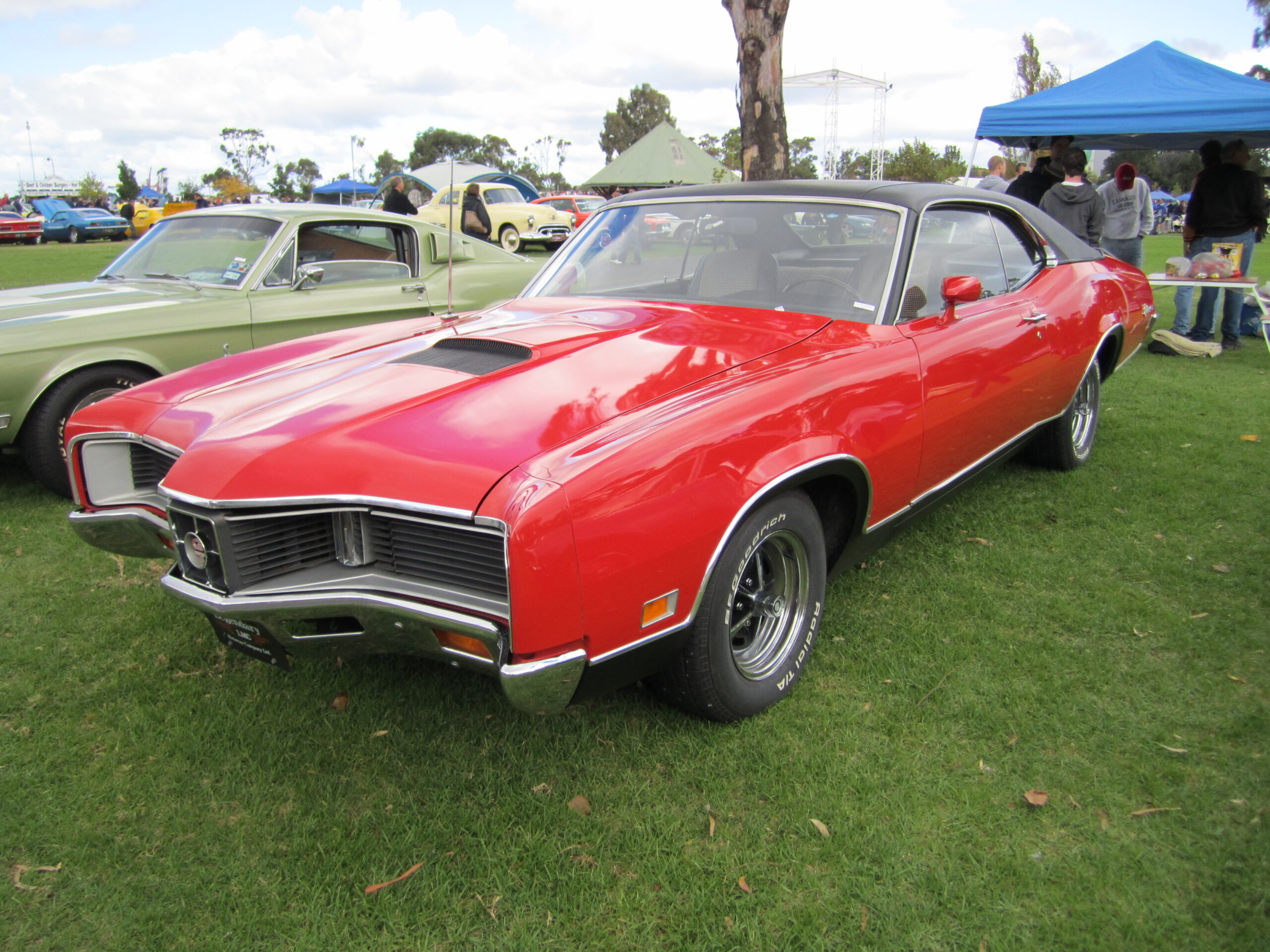
12. **1970 Mercury Cyclone GT**Stepping out of the shadow of its Ford relatives, the 1970 Mercury Cyclone GT presented a unique and aggressive vision of muscle. With its distinctive “shark-nose” front grille and purposeful styling, the Cyclone GT certainly looked the part of a performance machine. Mercury, often trying to bridge the gap between Ford’s mainstream and Lincoln’s luxury, injected a sophisticated edge into this powerful contender.
Under the hood, the 1970 Mercury Cyclone GT was powered by a 351-cubic inch Cleveland V8, which was factory rated to produce a respectable 300 horsepower. This engine provided ample power for spirited driving and held its own against many contemporaries. The Cyclone GT also offered optional performance packages, which could elevate its capabilities to even higher, Shelby-like levels, making it a surprisingly potent package.
However, its journey to widespread acclaim was hampered by several factors. Despite its aggressive design and solid performance, the Cyclone GT was consistently overshadowed by more popular contemporaries such as the Ford Mustang and Chevrolet Camaro. These vehicles often offered similar performance with more established identities and, in some cases, lower price points that resonated more with the traditional muscle car audience.
Furthermore, Mercury’s positioning as a slightly more upscale brand, coupled with a higher price point for the Cyclone GT, meant it didn’t always connect with buyers looking for raw, unadulterated performance over perceived luxury. This combination of factors meant it struggled to achieve the recognition it deserved, making it a compelling, yet often forgotten, chapter in muscle car history.
Car Model Information: 2025 Hyundai PALISADE XRT
Name: Mercury (Comet) Cyclone
Caption: 1971 Mercury Cyclone GT
Manufacturer: Mercury (automobile)
ModelYears: 1964–1971
Class: Muscle car
Layout: FR layout
Predecessor: Mercury Comet
Successor: Mercury Cougar#Third generation (1974–1976)
Related: Mercury Comet,Ford Fairlane (Americas),Mercury Montego,Ford Torino Talladega
BodyStyle: coupe
Categories: 1970s cars, Articles with short description, Cars introduced in 1964, Commons category link from Wikidata, Coupés
Summary: The Mercury Cyclone is an automobile that was marketed by the Mercury division of Ford from 1964 to 1971. Introduced in 1964 as the Mercury Comet Cyclone, the Cyclone replaced the S-22 as the performance-oriented version of the Mercury Comet model line. The Cyclone became a distinct nameplate for the 1968 model year, as the Mercury Montego was phased in to replace the Comet.
Within Mercury, the Cyclone was positioned between the Cougar pony car and the Marquis/Marauder full-size two-doors. Though largely overshadowed by the Cougar, the Cyclone was positioned as a muscle car, representing the Mercury brand in racing as a clone of the Ford Fairlane Thunderbolt.
Four generations of the Cyclone were produced, with production ending after the 1971 model year. For the 1972 model year, the Cyclone returned as an option package for the Montego; only 30 examples were produced. Within the Mercury line, the Cyclone was not directly replaced. The Cougar XR7 was repackaged as a personal luxury version of the Montego for 1974.
Get more information about: Mercury Cyclone
Buying a high-performing used car >>>
Brand: Mercury Model: Cyclone GT
Price: $40,788 Mileage: 5,081 mi.
Read more about: The Untamed 15: Legendary Muscle Cars That Dominated the Drag Strip and Refused to Lose

13. **1972 Pontiac Ventura Sprint**In an era when Pontiac was renowned for producing some of the most iconic muscle cars, the 1972 Ventura Sprint quietly presented a more understated, yet still respectable, performance package. While it might not possess the raw, intimidating power of a GTO, the Ventura Sprint offered a blend of practicality and decent performance that, for various reasons, didn’t quite capture the mainstream spotlight.
The Ventura Sprint was typically equipped with a 307-cubic inch V8 engine. While this was a more modest offering compared to the gargantuan powerplants found in its more famous Pontiac siblings, it still provided decent performance for its time and chassis. It offered enough grunt for enjoyable daily driving and occasional spirited runs, but it wasn’t engineered to dominate drag strips like its high-horsepower stablemates.
The primary reason for its failure to gain the spotlight was its understated design and the overwhelming, overshadowing presence of the Pontiac GTO. The GTO, with its bolder style, more powerful engines, and established performance image, completely dominated Pontiac’s muscle car identity. The Ventura Sprint’s comparatively subtle aesthetics and less aggressive performance figures meant it rarely registered on the radar of enthusiasts seeking the most extreme muscle car experience, relegating it to a niche appreciated by few.
Car Model Information: 1960 Pontiac Ventura
Name: Pontiac Ventura
Manufacturer: Pontiac (automobile)
Caption: 1973 Pontiac Ventura Sprint
Production: 1960–1977
Class: Full-size
Layout: FR layout
Categories: 1970s cars, Articles with short description, Cars discontinued in 1977, Cars introduced in 1960, Commons category link from Wikidata
Summary: The Pontiac Ventura is an automobile model which was produced by Pontiac between 1960 and 1977.
The Ventura started out as a higher content trim package on the Pontiac Catalina, and served as the inspiration for the luxury content Pontiac Grand Prix in 1962, then remained as a trim package on the Catalina until 1970. Its name was derived from Ventura, California, joining other similarly derived contemporary models such as the fellow Pontiac Catalina, the Chevrolet Malibu, and the rival Mercury Monterey.
The Ventura nameplate was also used on Pontiac’s version of the Chevrolet Nova from 1971 to 1977.
Get more information about: Pontiac Ventura
Buying a high-performing used car >>>
Brand: Pontiac Model: Ventura
Price: $34,000 Mileage: 39,785 mi.
Read more about: Unearthing Automotive Legends: 10 Rare Pontiac Models That Demand a Second Look
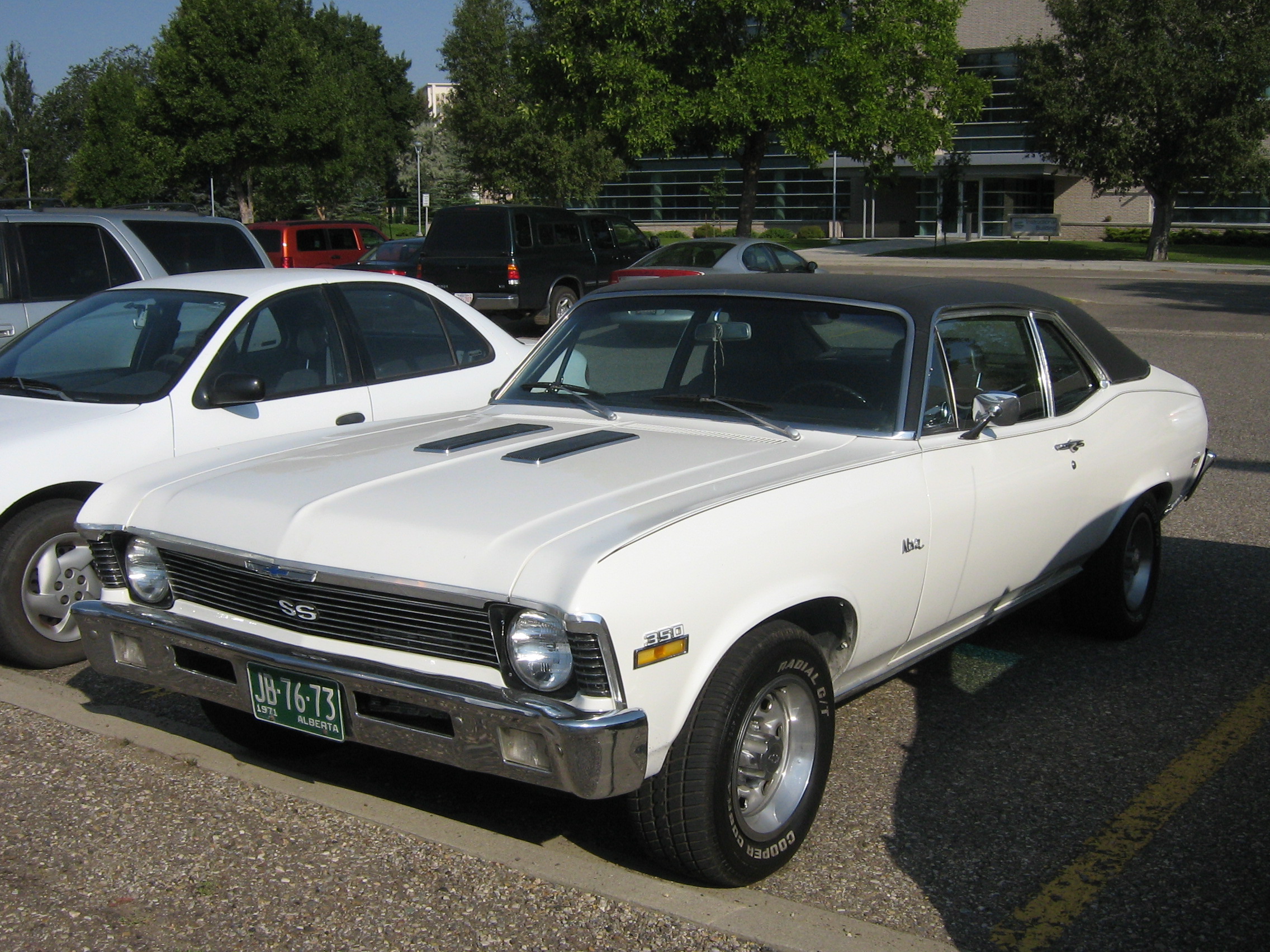
14. **1971 Chevrolet Nova SS**The 1971 Chevrolet Nova SS stands as a quintessential example of a “sleeper” muscle car – a vehicle that packed serious performance credentials beneath an unassuming exterior. While its siblings like the Camaro and Chevelle SS hogged the limelight with their flashy aesthetics and aggressive marketing, the Nova SS offered a robust power package in a more subtle, yet equally capable, wrapper.
Under the hood, the 1971 Nova SS was powered by a robust 350-cubic inch V8 engine. This powerplant could be outfitted to produce up to 270 horsepower, a formidable figure for the era. The Nova SS was engineered for impressive acceleration and responsive driving dynamics, proving that a compact Chevrolet could indeed deliver a thrilling muscle car experience that rivaled larger, more celebrated models.
However, the Nova SS often flew under the radar precisely because of its subtle styling. Its more understated, boxy design, while clean and functional, lacked the flamboyant aesthetics and aggressive lines that many muscle car enthusiasts craved during that era. It didn’t scream “muscle car” in the same way a Camaro or Chevelle did, opting instead for a more subdued approach that blended into everyday traffic.
This aesthetic choice, coupled with the overshadowing fame of the Camaro and Chevelle SS models, meant the 1971 Nova SS never truly received the widespread recognition it deserved. For the discerning enthusiast, however, it remains a fantastic choice, offering potent performance and a genuine classic muscle car feel without the inflated price tags associated with its more famous, but not necessarily better-performing, contemporaries.
Car Model Information: 2025 Hyundai PALISADE XRT
Caption: 1963 Chevrolet Chevy II 300 4-door sedan
Name: Chevrolet Chevy II / Nova
Manufacturer: unbulleted list
ModelYears: unbulleted list
Production: unbulleted list
Class: unbulleted list
Successor: unbulleted list
Categories: 1970s cars, 1980s cars, All articles needing additional references, Articles needing additional references from March 2025, Articles with short description
Summary: The Chevrolet Chevy II/Nova is a small automobile manufactured by Chevrolet, and produced in five generations for the 1962 through 1979, and 1985 through 1988 model years. Built on the X-body platform, the Nova was the top selling model in the Chevy II lineup through 1968. The Chevy II nameplate was dropped after 1968, with Nova becoming the nameplate for all of the 1969 through 1979 models. It was replaced by the 1980 Chevrolet Citation introduced in the spring of 1979. The Nova nameplate returned in 1985, produced through 1988 as a S-car based, NUMMI manufactured, subcompact based on the front wheel drive, Japan home-based Toyota Sprinter.
Get more information about: Chevrolet Chevy II / Nova
Buying a high-performing used car >>>
Brand: Chevrolet Model: Nova SS
Price: $40,788 Mileage: 5,081 mi.
Read more about: The Roaring Return: 12 Iconic Pontiac Legends We’d Love to See Back on the Road
What a truly fascinating dive into the underappreciated echelons of muscle car history! This extensive list challenges the conventional narrative, reminding us that the world of high-performance American vehicles is far richer and more diverse than often portrayed. We hope this exploration has shed some well-deserved light on these formidable machines, proving that a truly captivating automotive experience isn’t always found among the biggest names or the highest auction prices. For those with an appreciation for authentic power, unique styling, and compelling history, these overlooked classics offer a remarkable opportunity. Investing in one of these underappreciated muscle cars isn’t just about owning a piece of history; it’s about claiming a slice of automotive brilliance that promises just as many smiles, often for a significantly smaller investment. Who knows, perhaps one day these unsung heroes will receive the widespread appreciation they always deserved, making ownership a truly smart move for any enthusiast.

